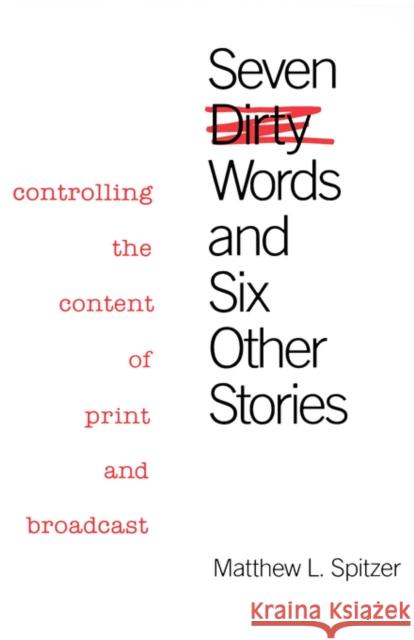Seven Dirty Words and Six Other Stories: Controlling the Content of Print and Broadcast » książka
Seven Dirty Words and Six Other Stories: Controlling the Content of Print and Broadcast
ISBN-13: 9780300035681 / Angielski / Twarda / 1987 / 180 str.
Why does the United States control the content of broadcast more strictly than it controls the content of print? In this provocative book, Matthew L. Spitzer explores the various rationales that support such different treatment and concludes that broadcast media should not be as strictly regulated as it is. Spitzer attacks the three most prevalent arguments in favor of broadcast control, utilizing insights from economics and social psychology and relating them to basic questions of First Amendment law and regulation of broadcasting. First, he shows that arguments centered on economic efficiency--such as those based on the supposed scarcity of the airwaves--can be applied equally to the print media. Next, responding to arguments that exposure to sexually explicit material encourages socially harmful conduct, he demonstrates that sexually explicit printed matter is at least as pernicious as broadcast erotica and that printed violence seems to have the same effects as broadcast violence. The third series of arguments--that broadcasting is more readily available to young children than is print--does have some validity, says Spitzer. However, we can shield children from exposure to broadcast material that may harm them by several methods: "zoning" broadcast violence and sexy by confining such matter to "adult" channels that can be received only by special receivers; allowing sex and violence to be broadcast only during the late night hours; and requiring television locks so that parents can monitor children's access to programming. According to Spitzer, there is not justification for censorship of indecent programming or for such regulations as the fairness doctrine or equal time for political candidates. His timely and spirited book makes a powerful case for changing national policy in this significant area.











